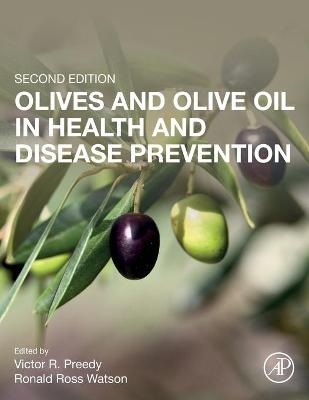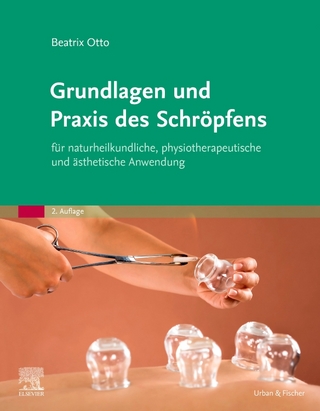
Olives and Olive Oil in Health and Disease Prevention
Academic Press Inc (Verlag)
978-0-12-819528-4 (ISBN)
Victor R. Preedy BSc, PhD, DSc, FRSB, FRSPH, FRSC, FRCPath graduated with an Honours Degree in Biology and Physiology with Pharmacology. After gaining his University of London PhD, he received his Membership of the Royal College of Pathologists. He was later awarded his second doctorate (DSc), for his contribution to protein metabolism in health and disease. He is Professor of Clinical Biochemistry (Hon) at King’s College Hospital and Emeritus Professor of Nutritional Biochemistry at King’s College London. He has Honorary Professorships at the University of Hull, and the University of Suffolk. Professor Preedy was the Founding Director and then long-term Director of the Genomics Centre at King’s College London from 2006 to 2020. Professor Preedy has been awarded fellowships of the Royal Society of Biology, the Royal College of Pathologists, the Royal Society for the Promotion of Health, the Royal Institute of Public Health, the Royal Society for Public Health, the Royal Society of Chemistry and the Royal Society of Medicine. He carried out research when attached to the National Heart Hospital (part of Imperial College London), The School of Pharmacy (now part of University College London) and the MRC Centre at Northwick Park Hospital. He has collaborated with international research groups in Finland, Japan, Australia, USA, and Germany. To his credit, Professor Preedy has published over 750 articles, which includes peer-reviewed manuscripts based on original research, abstracts and symposium presentations, reviews and edited books. Ronald Ross Watson, PhD, is Professor of Health Promotion Sciences at the University of Arizona, Mel and Enid Zuckerman College of Public Health. Dr. Watson began his research in public health at the Harvard School of Public Health as a Fellow in 1971 doing field work on vaccines in Saudi Arabia. He has done clinical studies in Colombia, Iran, Egypt, Saudi Arabia and the United States which provides a broad international view of public health. He has served in the military reserve hospital for 17 years with extensive training in medical responses to disasters as the chief biochemistry officer of a general hospital, retiring as a Lt. Colonel. He is a distinguished member of several national and international nutrition, immunology, and cancer societies. Dr. Watson’s career has involved studying many lifestyle aspects for their uses in health promotion. He has edited over 100 biomedical reference books and 450 papers and chapters. His teaching and research focuses on alcohol, tobacco, and drugs of abuse in heart function and disease in mouse models.
PART 1 General Aspects of Olives and Olive Oil 1.1 The plant, production, olives and olive oil and their detailed characterization 1. Table olives: types and trade preparations; 2. Naturally processed table olives, their preservation and uses; 3. Olive tree genetics, genomics and transcriptomics for the olive oil quality improvement; 4. The chemical composition of Italian virgin olive oils
1.2 Components of Olives and Olive Plant Product and Uses 5. Bioactive ingredients in olive leaves; 6. Detection of adulterations of extra virgin olive oil by means of infrared thermography; 7. Influence of the distribution chain on the quality of extra virgin olive oils; 8. Spectroscopy to evaluate the quality control of extra virgin olive oils; 9. Chemical composition of fermented green olives; 10. Polyphenols in Olive Oil: The importance of Phenolic Compounds in the Chemical Composition of Olive Oil; 11. Polyphenol oxidase and oleuropein in olives and their changes during olive ripening
1.3 Stability, Microbes, Contaminants and Adverse Components and Processes 12. Degradation of phenolic compounds found in olive products by Lactobacillus plantarum strains; 13. Microbial colonization of naturally fermented olives
PART 2 Nutritional, Pharmacological and Metabolic Properties of Olives and Olive Oil 2.1 General Nutritional and Health Aspects 14. Overview of Olive oil in vascular dysfunction; 15. Olive in Traditional Persian Medicine: An Overview; 16. The bioavailability of olive oil phenolic compounds and their bioactive effects in humans; 17. Mediterranean Diet and role of olive oil; 18. Probiotics from Fermented Olives; 19. Olive oil-contained phenolic compounds protect cells against H2O2-induced damage and modulate redox signaling by chelating intracellular labile iron; 20. Synaptosomes as a model to study fish- and olive-oil effect as neuroprotectors; 21. Olive oil and postprandial energy metabolism: implications for weight control; 22. Effect of Olive oil on Metabolic Syndrome
2.2 Cardiovascular 23. Olive and olive oil: a one stop herbal solution for the prophylaxis and management of cardiovascular disorders; 24. Extra-virgin olive oils storage: effect on constituents of biological significance
2.3 Oxidative Stress 25. Antioxidants in olive oil phenolics: a focus on myoblasts; 26. Antioxidant activity in olive oils
2.4 Cancer and Immunology 27. Olives and olive oil compounds active against pathogenic microorganisms; 28. Olive oil in the prevention of breast and colon carcinogenesis; 29. The effects of olive oil and other dietary fats on redox status on breast cancer; 30. Olive Pollen Allergens: an insight into clinical, diagnostic and therapeutic concepts of allergy; 31. Cancer preventive role of olives and olive oil via modulation of apoptosis and NF-κB activation; 32. Immune system and olive oil
2.5 Other Effects, Uses and Diseases 33. Effect of olive oil on the skin; 34. Extra virgin olive oil, cognition and brain health; 35. The Foundation for the Use of Olive Oil in Skin Care and Botanical Cosmeceuticals; 36. Olive oil and male fertility; 37. Revealing the Molecular Mechanism of Olea Europaea L. in Treatment of Cataract; 38. Olive leaf, DNA damage and chelation therapy; 39. Olive polyphenols and chronic alcohol protection; 40. Olive oil diet and amyloidosis: focus on Alzheimer’s disease; 41. Olive biophenols benefits and challenges: A perspective; 42. Treatment and valorization of olive mill wastewater
PART 3 Specific Components of Olive Oil and Their Effects on Tissue and Body Systems 3.1 Tyrosol and Hydroxytyrosol 43. Cancer chemopreventive activity of maslinic acid, a pentacyclic triterpene from olives and olive oil; 44. Hydroxytyrosol, olive oil and use in aging; 45. Hydroxytyrosol and hydroxytyrosyl fatty esters: occurrence and anti-inflammatory properties; 46. Influence of olive oil on pancreatic, biliary and gastric secretion. Role of gastrointestinal peptides; 47. Effects of virgin olive oil on fatty acid composition of pancreatic cells membranes: modulation of acinar cell function and signalling, and cell injury; 48. Hydroxytyrosol: features and impact on pancreatitis; 49. The Effects of extra-virgin olive oil minority compounds hydroxytyrosol and oleuropein on glioma
3.2 Oleuropein 50. The usage of oleuropein on myocardium; 51. Oleuropein and skin cancer; 52. Oleuropein, olive and insulin resistance
3.3 Oleic Acid 53. Oleic acid, the main component of olive oil on postprandial metabolic processes; 54. Oleic acid and olive oil polyphenols down-regulate fatty acid and cholesterol synthesis in brain and liver cells
3.4 Oleocanthal 55. Olive Oil Oleocanthal and Estrogen Receptor Expression; 56. Neuroprotective Effects of Oleocanthal in Neurological Disorders; 57. S-(-)-Oleocanthal as a c-Met receptor tyrosine kinase inhibitor and its application to synergize targeted therapies and prevent breast cancer recurrence; 58. Phenolic Compounds in Olive Oil Mill Wastewater (2nd Edition)
PART 4 Online Resources and other Recommended Material Online Resources and other Recommended Material
| Erscheinungsdatum | 15.01.2021 |
|---|---|
| Verlagsort | San Diego |
| Sprache | englisch |
| Maße | 216 x 276 mm |
| Gewicht | 1990 g |
| Themenwelt | Sachbuch/Ratgeber ► Gesundheit / Leben / Psychologie |
| Technik ► Lebensmitteltechnologie | |
| ISBN-10 | 0-12-819528-2 / 0128195282 |
| ISBN-13 | 978-0-12-819528-4 / 9780128195284 |
| Zustand | Neuware |
| Informationen gemäß Produktsicherheitsverordnung (GPSR) | |
| Haben Sie eine Frage zum Produkt? |
aus dem Bereich


